Astronaut returns to her hometown of Richland after space stay, encouraging engineers
- Oops!Something went wrong.Please try again later.
Kayla Barron paid forward on Thursday some of the mentoring that helped a young girl in Eastern Washington become a NASA astronaut.
During a Fourth of July holiday visit to family in her hometown of Richland, she took time to speak with Women in Engineering for Washington River Protection Solutions at the Hanford site. Her talk was broadcast to workers across the Hanford nuclear reservation.
She talked about the importance of mentoring and encouragement in her own career.
And she also answered some questions about what life in space is like, from how clothes are washed on the International Space Station — they aren’t — to some of the nitty-gritty of turning bodily fluids into water on the space station.
She spent six months aboard the space station, returning in early May.
Her parents raised her to believe that she could do anything she set her mind to if she put forward her best effort, she said.
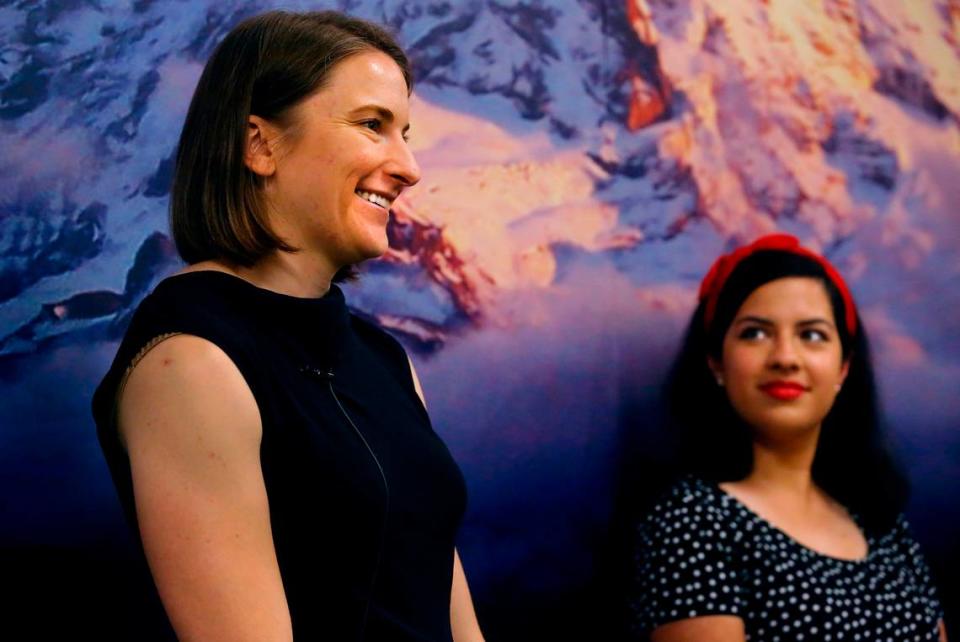
Her father, Scott Sax, is the recently retired president of the Central Plateau Cleanup Co. at Hanford and her mother, Laurie Sax, coached her in track and cross country at Richland High School.
“Then I had critical mentors along the way,” she said.
They started with middle school and high school teachers who encouraged her curiosity, including an advanced placement chemistry teacher who said that as difficult as she was finding the course, she was good at chemistry.
“Math and science are hard for everybody,” she said. “Just because it’s hard doesn’t mean you are not good at it.”
Cultural influences start at a young age and seeing people who look like you succeeding in science, math, engineering and technology careers can have a major impact on young women and minorities, helping them see themselves in the same roles, she said.
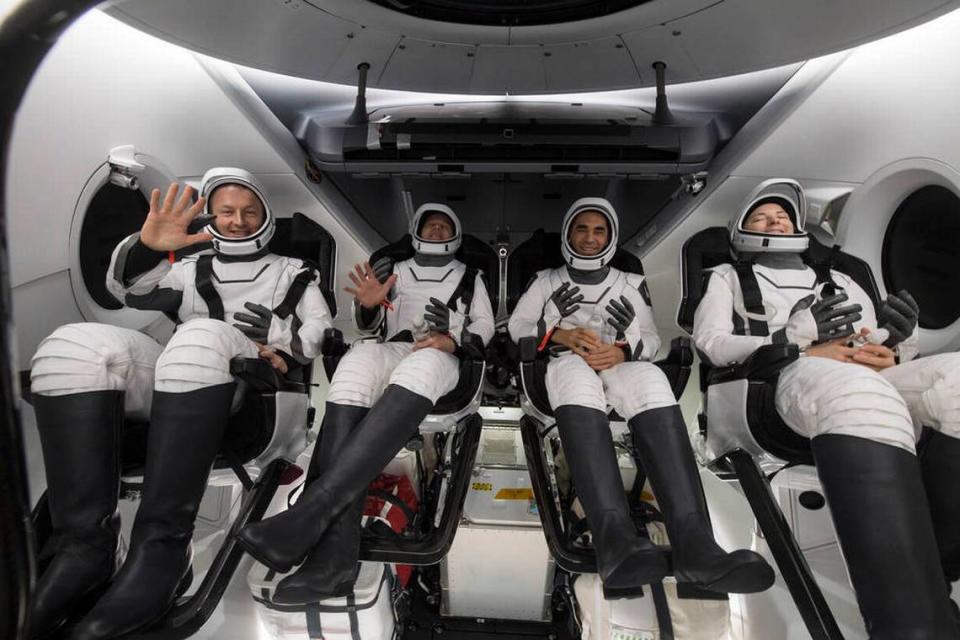
“I think you have to work really hard in these fields, but they are also super rewarding,” Barron said.
Mentors continued to be important as she advanced in her professional career, she said.
Barron’s submarine, space mentors
She earned a bachelor’s degree in systems engineering from the U.S. Naval Academy in 2010 and then a master’s degree in nuclear engineering from the University of Cambridge, England, in 2011 as a Gates Cambridge Scholar.
The transition from academics to making real world decisions in leadership roles, starting with being responsible for people’s lives as a Navy submarine warfare officer, was challenging, she said.
She remembered being in the officer’s study aboard a nuclear submarine late at night with schematics and technical manuals spread out as she dug deep into understanding the electrical system, when her captain walked in and questioned what she was doing.
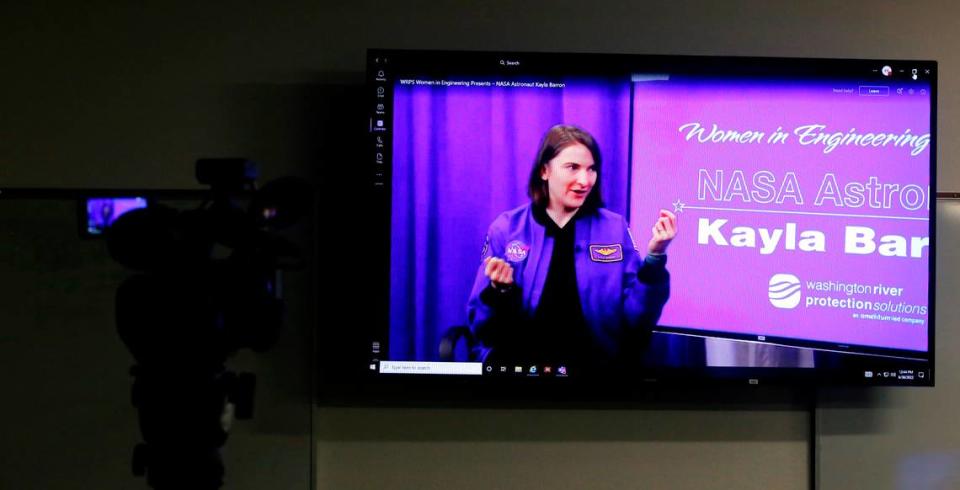
He was not impressed. His standard to qualify her to be in charge of operating the submarine was “three-minute safe,” he said.
That’s how long she needed to be in charge if there were a problem such as a primary coolant leak before the engineer could be awakened and take charge, he said.
“That was the challenge and leadership I needed to stop hiding behind these books,” she said.
She started out operating the submarine at night “three-minute safe,” and progressed to “30-minute safe” and more because she had leadership that pushed her and allowed her to be “three-minute safe” on her first shift, she said.
Aboard the International Space Station, the two experienced NASA astronauts also were generous in creating opportunities for rookies Barron and Raja Chari, both on their first space flights.
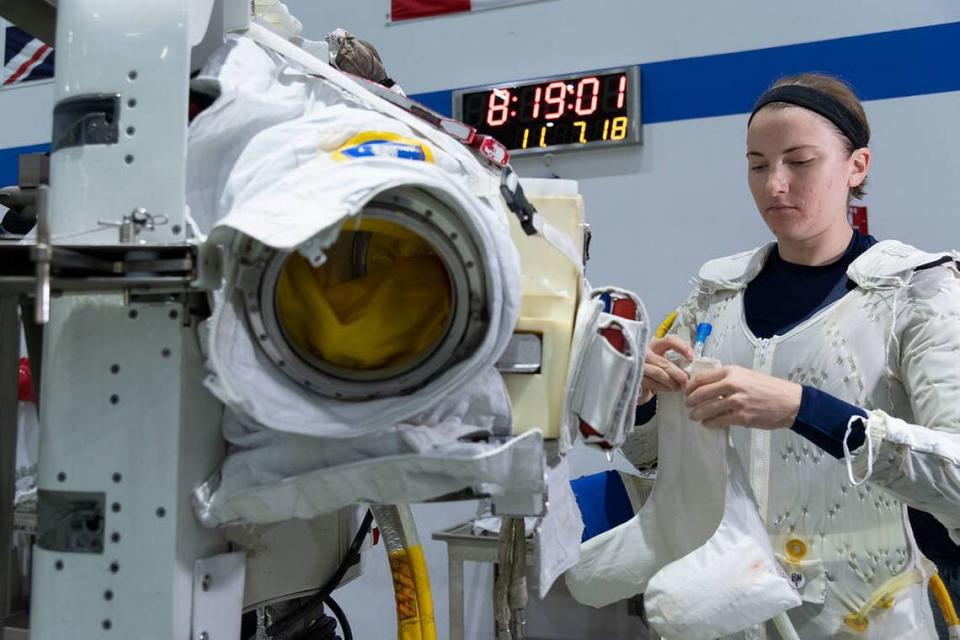
They were assigned to spacewalks, at the expense of opportunities for the more experienced astronauts, Barron said.
Astronauts Tom Marshburn and Mark Vande Hei “were like pushing the babies out the nest,” she said.
Barron already misses being at the International Space Station, she said Thursday.
But there are challenges ahead for her.
NASA plans mission to Moon
NASA is preparing to return humans to the Moon, including sending the first woman and the first person of color there.
Plans call for a space station orbiting the Moon, sending out landers to the surface, and the establishment of a base camp there.
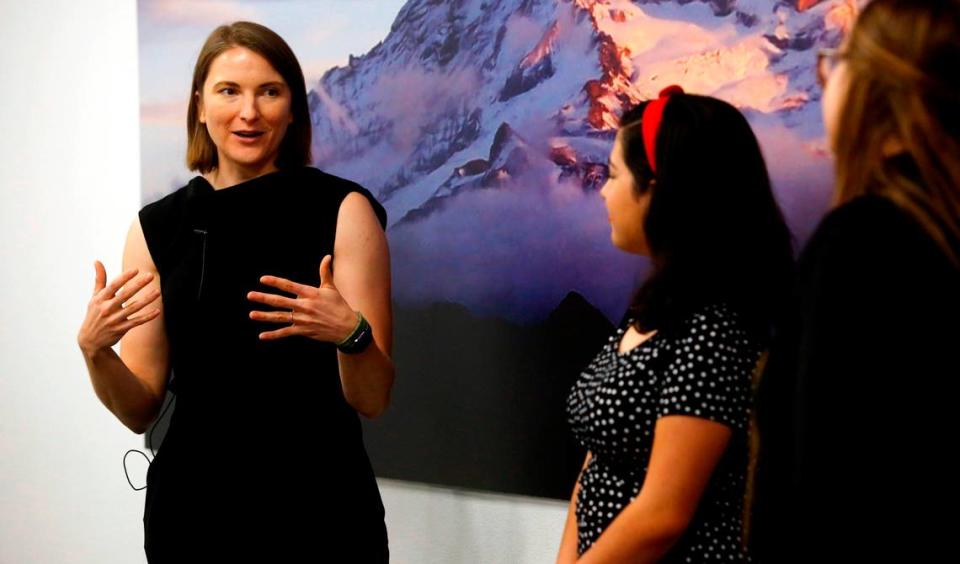
It will mean new technical challenges for astronauts, such as learning how to fly the landers onto the moon, Barron said.
“And of course we are all going to have to become geology buffs for lunar missions,” she said.
“We’ve had some basic geology training that has been really exciting,” she said. “But we’re going to do significant training to understand the regions we are going to and really get the most out of the limited time we have to explore and collect samples.”
Bringing Barron to Hanford was important to show “the sky is no longer the limit,” said Brittney Atterbury, a mechanical engineer at the tank farms. “It doesn’t matter if you are a female engineer or minority — there is no reason to hold you back.”
Barron plans to return in the fall to visit with Tri-Cities students.
Astronaut life on space station
If they are like Hanford engineers and other workers, here’s some of what they may want to know:
▪ How do you wash clothes aboard the space station?
You don’t, Barron said. After they are worn for awhile they are thrown away and new clothes arrive in shipments to the space station.
▪ How big is the space station?
About the size of a six-bedroom house, Barron said.
▪ How is the food?
Surprisingly good for dehydrated food and packages similar to military MREs — meals ready to eat — that are heated up, Barron said. But they can get repetitive.
Astronauts looked forward to shipments that included fresh fruit, vegetables and cheese. When one arrived on Christmas Eve, it was “like Santa coming,” she said.
▪ What’s a workday like?
She generally had her days scheduled in five-minute increments from 7:30 a.m. to 7:30 p.m. weekdays and half of Saturday on the research mission.
When astronauts got ahead of their own schedule, they’d see if other astronauts needed help. Each astronaut worked on 200 research projects during their stay.
▪ How many times did she drink the same water?
Water is recovered from urine and from reclaiming moisture in the air, such as sweat from working out.
“Today’s coffee is tomorrow’s coffee,” one of her co-astronauts would say.
“Kind of gross if you think about it,” she said.
Now about 90% of water they put into their body is reclaimed, but astronauts worked on research on the space station to improve that percentage as missions to the Moon and Mars are planned.

